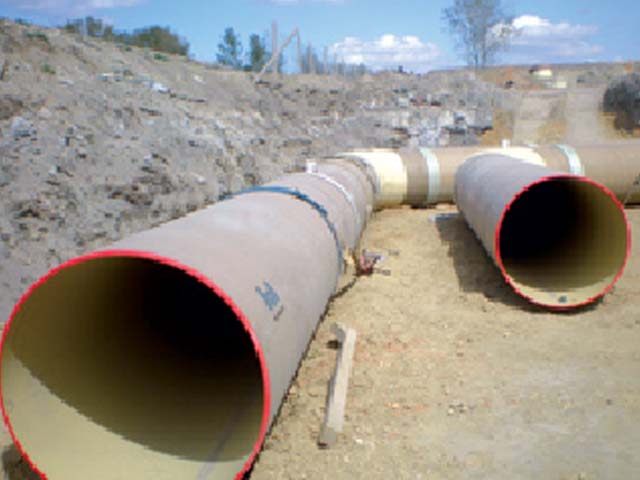
Wasteater Pipline to WWTP for a Blue Danube
The project is financed by the EU from the design to construction and a first feasibility study was made by a consortium lead by the Swedish engineering company SWECO in 2002. Latest technologies will increase the effiency of biological treatment by three times and enable 92 % of waste water to be treated biologically. With a planned maximal capacity of 900,000 m³ per day, it is the largest sewage treatment plant in Hungary and the 2nd largest in Europe. It will easily cope with the current 350,000 m3 sewage coming from the area’s main. This covers approximately half of Budapest’s storm and waste water originating from households and industry. Located on a floor space of 29 ha in the north of Csepel, the sewage treatment plant lies between km 1641 and 1642 of the Danube. A bypass with short pipes and a loose collar joint was installed in the plant building for an inductive flow meter. HOBAS CC-GRP Pipes were selected for this thanks to their relatively light weight, distinguished chemical resistance, and excellent hydraulic characteristics. The line consisting of three standard length (6 m), one 4.5 m and one 1.5 m long HOBAS CC-GRP pipes was fixed on suspensions. A connection pipe with a mechanical coupling was inserted prior to the flow meter.
More information about this application
PROJECT DETAILS
| Project ID: [10798] | |
| Country: | Hungary |
| City: | Csepel |
| Year: | 2008 |
| Application: | Sewer |
| Installation: | Open Trench, Above Ground |
| Technology: | Hobas |
| Total Length: | 2000 m |
| Nominal Diameter DN: | 1200 | 1400 | 1800 mm |
| Nominal Pressure PN: | 1 | 6 bar |
| Nominal Stiffness SN: | 5000 N/m2 |
